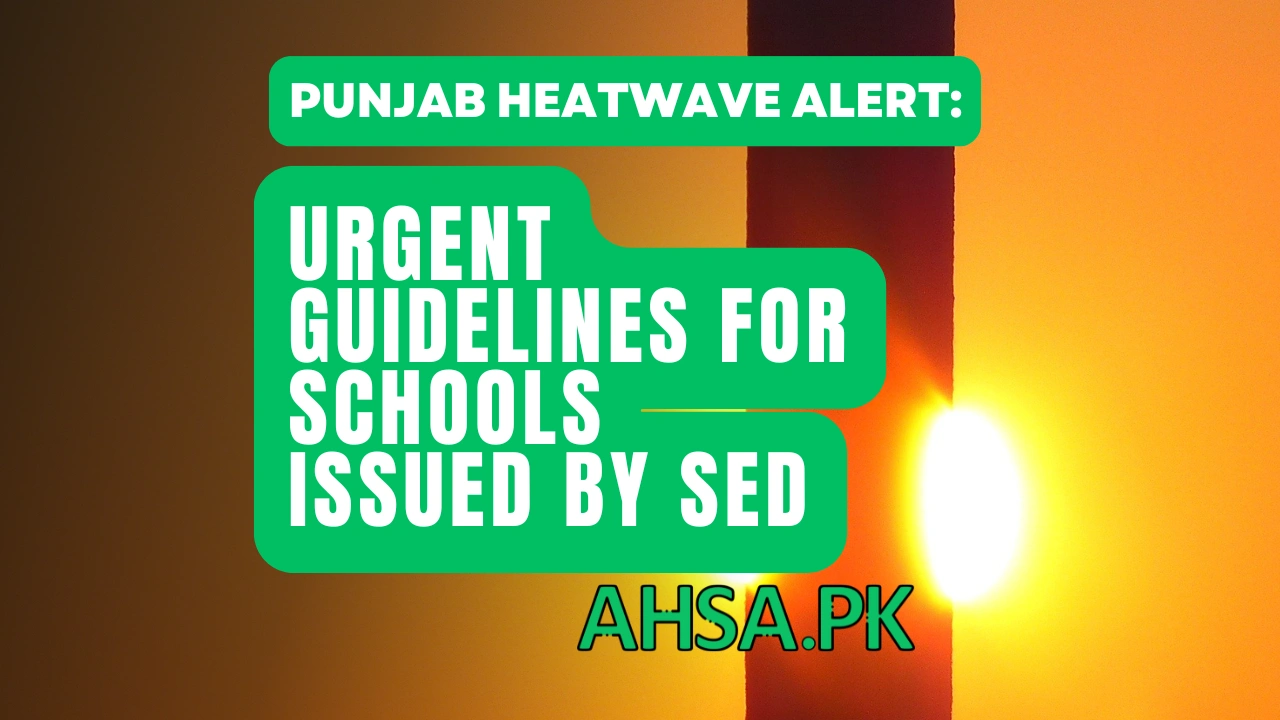The School Education Department (SED) has issued an urgent Punjab heatwave alert advisory for all public and private schools as temperatures soar across the province. With extreme heat posing health risks, schools must take immediate steps to protect students and staff from heat-related illnesses.
Punjab Heatwave Alert Guidelines for Schools
1. Ensure Proper Hydration
- Provide clean and cold drinking water in every classroom.
- Encourage students to drink 8-10 glasses of water daily to prevent dehydration.
2. Adjust Classroom Conditions
- Conduct classes in well-ventilated rooms.
- Use fans or air coolers to maintain airflow.
- Avoid direct sunlight exposure in classrooms.
3. Limit Outdoor Activities
- Suspend outdoor activities during peak heat hours (11 AM to 4 PM).
- Keep students indoors in the hottest part of the day.
4. Heatstroke Awareness & Emergency Preparedness
- Conduct awareness sessions on heatstroke symptoms (dizziness, nausea, headache).
- Train staff to handle heat-related emergencies.
- Keep first-aid kits readily available.
Click to Read: 6 New Matric Subject Groups in Punjab Schools
Why These Measures Are Necessary?
Punjab is experiencing record-high temperatures, increasing the risk of heat exhaustion and heatstroke among children. The SED Punjab has mandated these heatwave safety guidelines to ensure student safety in government and private schools.
Frequently Asked Questions
What should schools do during a heatwave?
Provide cool drinking water, ensure proper ventilation, and avoid outdoor activities during peak heat.
What are the symptoms of heatstroke in students?
Dizziness, excessive sweating, nausea, rapid heartbeat, and fainting are common signs.
Are private schools also required to follow these guidelines?
Yes, the SED Punjab advisory applies to all public and private schools.
What time should outdoor activities be avoided?
Schools should avoid outdoor activities between 11 AM to 4 PM, the hottest part of the day.
How can schools prevent heat-related illnesses?
By ensuring hydration, proper ventilation, and emergency preparedness with first-aid training.
Click to Read: Punjab Introduces Matric Inter GPA System 2026
Stay Safe During the Heatwave!
The Punjab government urges all schools to strictly implement these heatwave precautions to safeguard students. Parents and teachers must stay alert and proactive in preventing heat-related health risks.




